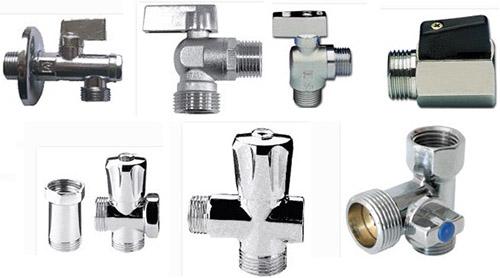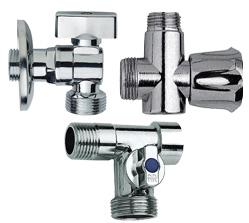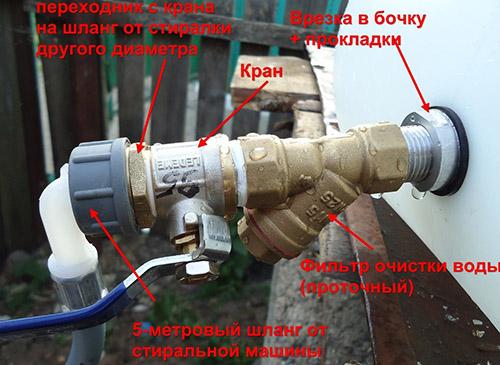In order to connect the washing machine to the water supply, it is necessary to carry out a series of plumbing work. There is nothing complicated in this, as with connection to the sewer, can be handled with a simple set of tools. The faucet for the washing machine will become an indispensable accessory when connecting the device to the water pipe - this is a reliable protection in case of an accident.
Some users prefer to connect to the water supply through a welded pipe section, through tees or through special overhead clamps, followed by drilling a hole in the main pipe. Then they hook the inlet hose to the outlet, open the central valve and enjoy the result. But such a scheme has a drawback - if a leak occurs in the washing machine or in the hose, it will not be possible to quickly turn off the water.
Thus, using a faucet to connect the washing machine to the water supply is highly recommended - if you do not want to flood your neighbors from below, be sure to install a faucet after inserting it. And as part of this review, we will consider all the faucets available for sale for connecting automatic washing machines.
What are the taps for washing machines

The ball valve for washing machines will allow you to close the tap almost instantly in the event of an unexpected accident or leakage. It has a simple design and has a long service life. When choosing a faucet, you should find out what metal it is made of.
If powder alloys were used here, then the choice cannot be called optimal - such taps often break during installation, with the slightest excess of the effort to twist them. Preference should be given to brass taps, as they have an increased level of strength and can serve for years.
And now we need to figure out what type of faucets are sold in stores. In total, we can distinguish three main types:
- Ball valve;
- Three-way crane;
- The crane is angular.
Actually, almost all of them are spherical, so in the future we will call them more simply - through, three-way or angular.
faucet
A through tap is used when a separate pipe from a common riser is already approaching the plumbing product. Such taps are used to connect the toilet cistern to the water supply - a regular faucet is installed here, with which we can quickly shut off the water supply to the cistern. That is, this crane, in fact, is a dead end, allowing you to cut off the end device. If a separate pipe is suitable for the washing machine, then we can safely put just such a tap here.
Three way valve
Three-way valve (tee tap) is a structure with three inputs and outputs. In fact, this is the most common tee, cut into a pipe and equipped with a side outlet valve.This connection scheme is used when after the machine you need to connect some more devices, for example, the same toilet bowl or a heating boiler - when the water supply to the washing machine is turned off, all other consumers will remain connected.
Angle faucet
Angle faucet is a type of conventional faucet. It provides a turn of the water flow by 90 degrees and is used to connect the final equipment - washing machines, heating boilers, faucets, toilet bowls, bidets and other devices. An angled faucet for a washing machine is convenient in bathrooms, where a separate pipe outlet for connecting appliances is already provided - just screw the faucet here and then connect the inlet hose to it.
Which faucet to choose

The choice of a tap should begin with an inspection of the installation site of the washing machine. If there is already a pipe for connecting equipment, and apart from the washing machine, nothing will be connected to the pipe, feel free to choose the most common through-hole tap, attach it to the end of the pipe, and then connect the inlet hose to it. Do not forget to specify the diameter of the pipes used in order to select the appropriate faucet and adapters for connection.
We will need a three-way tap when we make a tie-in or plan to connect additional devices and plumbing fixtures. For example, if there is also a dishwasher after the washing machine, then we use a three-way valve. The side outlet will go to the washing machine, and the through passage will go to the dishwasher - there, at the end, we will already install a through tap that allows you to turn off the end device.
Have you ever bought an apartment in a modern house? Then in your bathroom, most likely, there will already be a special outlet for connecting washing machines sticking out of the wall. In order to get rid of the inlet hose sticking out forward, we can mount an angle valve on the pipe, and then connect the hose itself to it.
When choosing a faucet, you should consider which way it turns - sometimes it happens that when you open the lever rests against the wall, which is not very convenient. Especially for this, there are taps on sale that can open in different directions.
How to install a washing machine faucet yourself

For self-installation of a faucet for a washing machine, we need a wrench and a fum tape. But this is only if there is a thread at the end of the pipe. If there is no thread, you need to cut it using the appropriate lerk. After that, we wind the fum-tape and the crane itself onto the pipe. In a similar way, we connect the second part of the pipe (if a three-way valve is used), and also connect the inlet hose.
Connection of taps to plastic pipes is carried out using a special tee. We cut the pipe in the area where the tie-in will be performed. We calculate the installation length of the tee and remove the excess part of the plastic pipe. At the next stage, we remove the nut from the tee and put it on the pipe, after which, using the calibrator, we expand the hole in the pipe.
Next, we just have to insert the tee fitting into the plastic pipe, put on the tightening ring and tighten the nut that has been put on in advance. Similarly, a further piece of pipe is connected, which will go to the next consumers. After that, with the help of a fum-tape, we screw a tap into the tee, and fasten the inlet hose to it - the connection is made!
